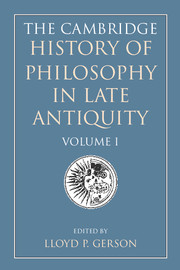
- Publisher:
- Cambridge University Press
- Online publication date:
- May 2011
- Print publication year:
- 2000
- Online ISBN:
- 9781139095457

 Loading metrics...
Loading metrics...
* Views captured on Cambridge Core between #date#. This data will be updated every 24 hours.
Usage data cannot currently be displayed.